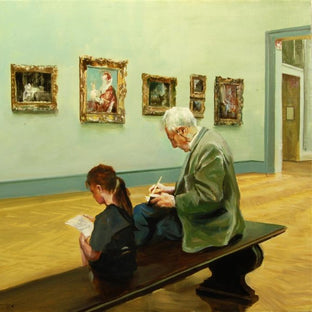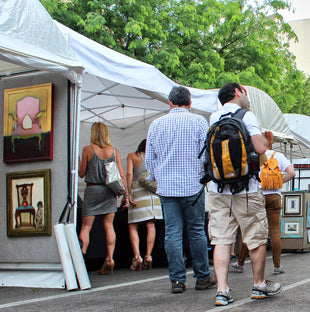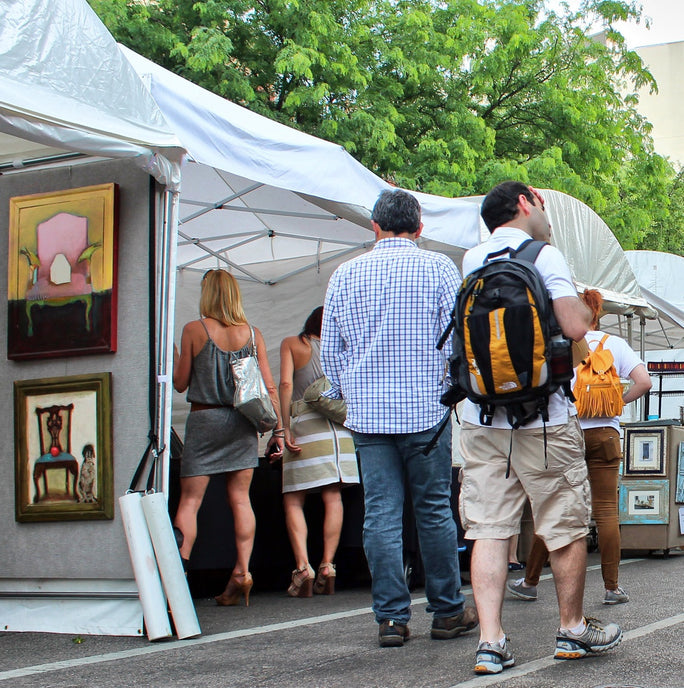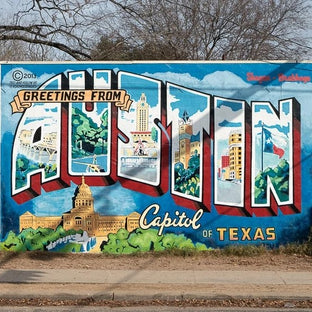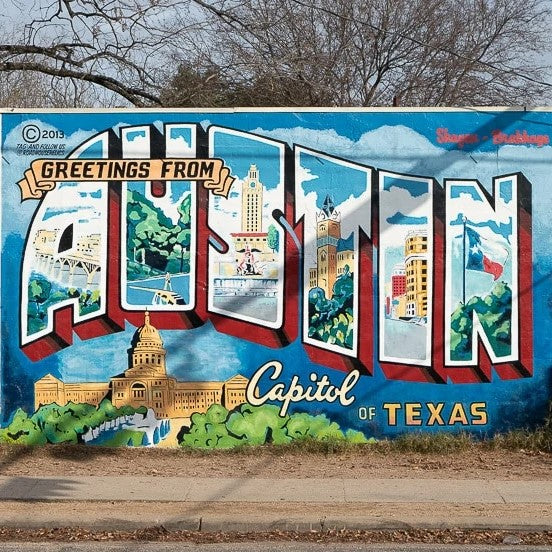State of the Art: How Public Sector Art Builds Great Communities
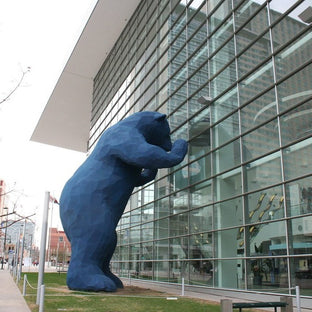
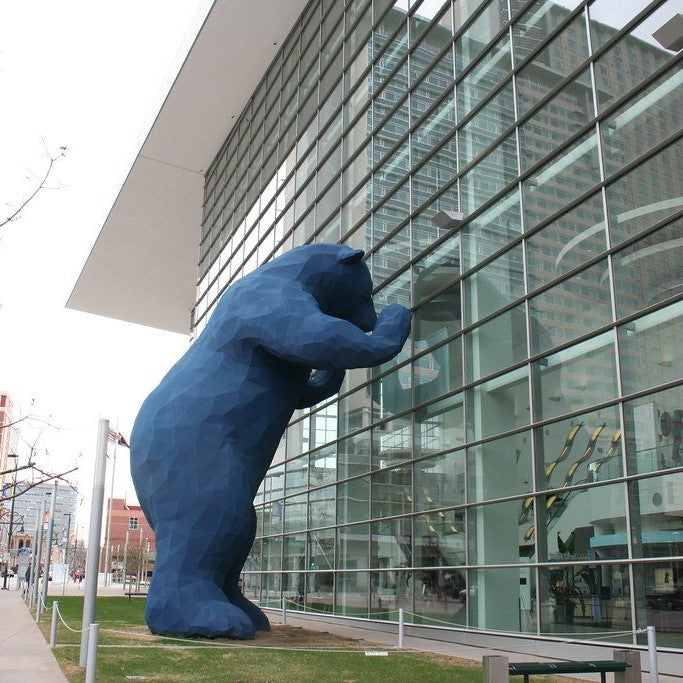

As part of our recent series on public art, we've explored several different types of interesting art in public places. We’ve shared wonderful public art in the form of transit art and street art, and we're eager to take a closer look at the application of art in the public sector. Public sector art is that which is specific to government-owned and operated places and spaces and we’re sharing why we believe art in public spaces is both valuable and important to build strong communities.
The History of Public Sector Art Projects
In 1959, Philadelphia was the first city in the U.S. to adopt legislation requiring that a percentage of the project budget be set aside in order to ensure that site-specific art is included as part of each major public construction project. Many cities and states have followed suit with "percent for the arts" programs popping up all over the country in the years since. "Percent for arts" programs vary in terms of process but are established to ensure that artworks are included as part of any public project over a certain dollar value. By way of an example, a "one percent for the arts" program requires that one percent of the total cost of construction be set aside for artwork to be created and installed within the premises of the taxpayer-funded building or space. At last count, there were approximately 350 cities and states that have adopted these policies, as well as the federal General Services Administration, which has designated that half a percent of the project cost for facility construction projects must be set aside for public art.
"Percent for arts" programs vary in terms of process but are established to ensure that artworks are included as part of any public project over a certain dollar value. By way of an example, a "one percent for the arts" program requires that one percent of the total cost of construction be set aside for artwork to be created and installed within the premises of the taxpayer-funded building or space. At last count, there were approximately 350 cities and states that have adopted these policies, as well as the federal General Services Administration, which has designated that half a percent of the project cost for facility construction projects must be set aside for public art.
Art in a government-owned building or place can take any form including photo images, public murals, and sculptures, just to name a few. Each project is original and unique, just as is every community which sponsors them. Examples of public sector art include art in your community park, airports, governor's residences, state capitols, city halls, public universities, federal buildings and the list goes on. In addition to public buildings, there are endless examples of publicly funded projects in outdoor and open spaces, as well as subways and transportation hubs.
How Public Sector Art Adds Value
Beyond the generally accepted philosophy that art is important, government-sanctioned art in public places adds tremendous value. Cities that embrace public art recognize its cultural relevance and that it improves the quality of life for its residents as well as visitors.
Whether you're on your way to pay a parking ticket at the local courthouse or setting out to hike a trail within a national park, we are ticking off a list of ways in which public sector art enhances the experience of these (and all) types of public places.
1. Art Creates a Sense of Community and Brings People Together
In our review of transit art and street art we discovered that publicly funded art projects go a long way toward establishing and enhancing a sense of community pride.
For example, the "Community Pride in Hannibal Square" mosaic located at the Winter Park Community Center in Florida is a symbol of unity for the predominately African American city. The mosaic shares an important message about the history of voting rights in the Florida community, a message which still holds great meaning for its residents.
2. Public Art Projects Provide Opportunities to Local Artists
From subway murals to park sculptures, local artists are creating inspired artworks which reflect their community connection. Many government-sponsored public art programs prioritize hiring local artists whenever possible. In the same sense, accomplished artists bring credibility to their communities by sharing their unique talents.
Artist Jean Shin (pictured above) is one of the more famous examples of a local artist contributing to the aesthetic of her community in New York City. “Elevated,” her glass, ceramic and mosaic installation depicts New Yorkers throughout history, based on archival photos from the local historical society.
3. Public Art Creates an Enhanced Aesthetic and Improved Quality of Life
We've shared research about how art has health benefits, and how the experience of art generally improves our moods, both as passive and active participants in artistic endeavors. The case can be reasonably made that maximizing our exposure to art in our daily lives has extraordinary benefits.
While many of us take the time to seek out art at a gallery or museum, it is a different experience to be viewers of art as part of our daily routine. As such, locals are tremendous beneficiaries when states and municipalities adopt and prioritize art across the landscape and infrastructure of their publicly funded spaces. Art makes us think, introducing creativity and inspiration into our world.
4. Public Art Educates Us About Culture and History
Public art projects can tell an important story about the evolution of people and places. These works not only share compelling aspects of a city and state's history, but they also preserve that history for future generations.
For example, the statue "Emergence" by artist Michael Naranjo is located on the grounds of the New Mexico State Capitol in Santa Fe. Naranjo was rendered blind as the result of a war injury yet refused to abandon his life's dream to pursue a career as an artist.
Aptly titled for both the scene it portrays as well as the strength and perseverance of the artist, "Emergence" is a bronze sculpture that depicts a Native American dancer, and its significance lies in Naranjo's memory of traditional Native American dances representative of the cherished traditions of the small Pueblo within which he grew up.
5. Public Art Enhances a City as a Creative Economy and Tourist Destination
Cities with fabulous galleries and museums make for great tourist destinations. The incorporation of public art projects makes a visit to an art destination even more interesting and satisfying.
Simply stated, great cities support the arts in all aspects. They offer visitors a creative, culturally diverse experience.
We look forward to sharing more of our favorite examples of public sector art in future articles. In the meantime, you can peruse original artworks by UGallery artists, updated weekly on our website.
